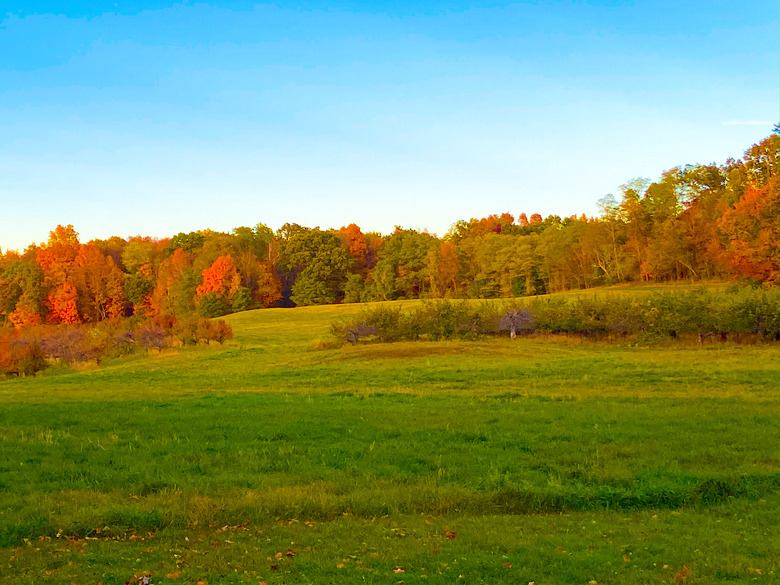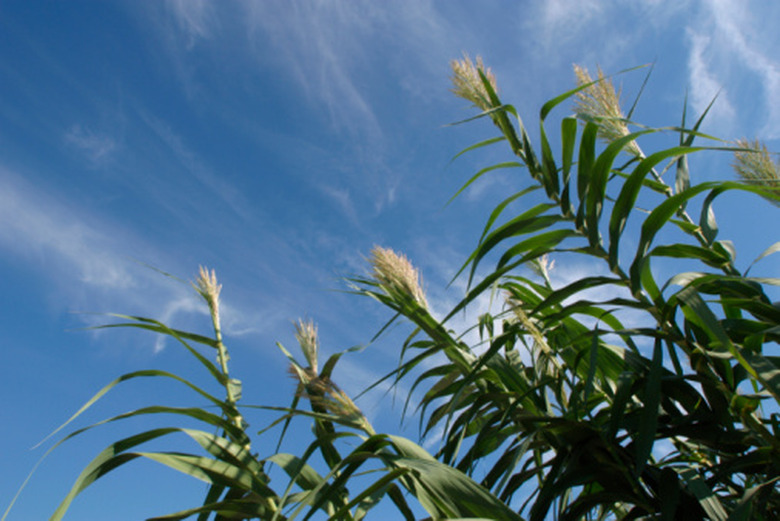How Are Grasses Pollinated?
The grass family (Poaceae) includes approximately 10,000 species. The importance of grass to humans probably cannot be overstated. Grasses, which include grains such as rice, wheat and corn, are food for both people and animals. Their roots prevent soil erosion. Grasses are used to produce practical items: bamboo is made into many items, such as furniture and boats; savanna grasses thatch roofs. Grasses also figure prominently in landscape design.
Wind Pollination
Wind Pollination
All grasses are wind pollinated, according to Ohio State University. Grasses are angiosperms, or flowering plants. They do not have all the flowering structures or the flowering structures grasses do have are smaller than flowering plants that draw insect pollinators. Those flowers usually have large, colorful petals and lovely scents.
Most wind-pollinated plants are green, have no or very small petals and lack scent. The flower structures they have are adapted for catching wind and pollen. Relative to other flowers, grass flowers may have larger anthers, the male flower structures that produce and hold pollen until a pollinator rubs it off. They also often have long, feathery stigmas, which are female reproductive structures that capture pollen. In insect-pollinated flowers, the stigmas capture pollen by their stickiness.
Spikelets
Spikelets
The individual reproductive parts of grasses are arranged in units called "spikelets." Each is the equivalent to a single flower. Grasses often have many individual spikelets packed near each other and, together, they are usually referred to by names such as grass "plume" or "wheat sheath." Spikelets are located near the top of plants, so pollen moves freely from one plant to another.
Extra Pollen
Extra Pollen
Rather than using energy to produce large petals or scent, grasses use their energy to produce large amounts of pollen. That increases the odds of at least some pollen finding its way to another flower's stigma. Plants that rely on wind for pollination, such as oaks and grasses, often densely pack the land around them with their offspring.
Pollination Periods
Pollination Periods
The University of Tulsa notes that grasses usually begin pollinating in May. Some native grasses only pollinate in spring, but ornamental and lawn grasses can produce pollen throughout summer and into the fall.
Cite This Article
MLA
Layne, Elizabeth. "How Are Grasses Pollinated?" sciencing.com, https://www.sciencing.com/how-are-grasses-pollinated-13427937/. 22 November 2019.
APA
Layne, Elizabeth. (2019, November 22). How Are Grasses Pollinated?. sciencing.com. Retrieved from https://www.sciencing.com/how-are-grasses-pollinated-13427937/
Chicago
Layne, Elizabeth. How Are Grasses Pollinated? last modified March 24, 2022. https://www.sciencing.com/how-are-grasses-pollinated-13427937/

